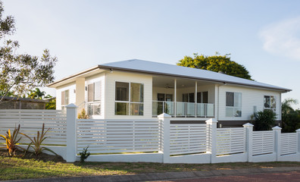When it comes to home improvement, nothing adds more value than new windows. They improve a home’s appearance, lower energy bills and boost comfort.

Choosing the right windows requires careful consideration of the cost and function. Homeowners should talk to a window professional about frame materials, styles and installation options. Contact Window Replacement Ellicott City, MD for professional help.
Window replacement is a major project that can be expensive, but it adds to the overall value of your home and improves energy efficiency. You can save on costs by making smart choices and planning ahead, and by purchasing your windows in bulk. The number of windows you purchase affects the total cost because many companies offer discounts when you buy a certain number.
The type of window also impacts the price. Different window types address different intended uses, and some require a more substantial change to the home’s structure than others. For example, bay and bow windows extend outward from the wall, whereas standard sash windows are flat in the middle. These larger window designs are more costly than standard sash windows because they require extra support to keep them in place.
Frame material is another factor that affects the price. Aluminum and vinyl frames are inexpensive, while fiberglass and composite frames are more expensive. The thickness of the glass also changes the price, as does the addition of energy-efficient features like low-emissivity coatings and tints.
Another important consideration is whether you’re replacing existing windows or installing new construction. New construction windows are installed in new homes and renovations that involve removing or altering a wall. While they’re less expensive than replacement windows, they don’t provide the same energy-efficiency benefits.
Window installation can be a labor-intensive process, and the price will vary depending on the complexity of the project and the number of windows being replaced. The cost will also increase if you’re replacing a single-story window with a double-story one or if you’re changing the size of an existing window.
You can save money by choosing the cheapest windows available, but don’t skimp on quality or style to make up for this budgetary shortfall. It’s important to invest in a well-made, high-performing window that will boost your home’s resale value and curb appeal while saving you hundreds of dollars a year on utility bills. You can also take advantage of available rebates and tax credits. For instance, if you choose a window from the Energy Star Most Efficient list, you could claim up to 30 percent of the cost through 2032.
Style
When choosing new replacement windows for your home, style and function are equally important. But the variety of window styles can feel overwhelming. This guide will help you navigate the various types and configurations to find the perfect match for your home.
The first step in the window selection process is determining which type of window you need. There are two major choices: full frame replacement and insert windows. Full frame replacement is necessary when the frames of your existing windows have sustained damage or rot, or you are remodeling your home and want to change the size or style of your windows.
Insert windows, on the other hand, are designed to fit inside the existing window frame. They are typically easier and less expensive to install than full frame replacement windows, but they don’t offer the same flexibility in terms of window style or operating style.
Full frame windows are the most common choice for new construction or remodeling projects that require replacement windows. They are installed into the studs of the home and feature a nail fin frame that is used to ensure an airtight and waterproof installation.
A full frame window has a built in nail fin that is used to create a watertight seal and is often used on homes with wood framing. This type of window also has a more traditional look that some homeowners may prefer.
An insert window does not have this built in nail fin, which makes them a bit more flexible in terms of installation. However, they are not recommended for use in areas where the exterior window trim and siding will be exposed to the elements. These types of windows are also not ideal for DIY installation as they will void the warranty.
Both types of windows come in a variety of sizes and shapes. Some are fixed while others open and close. Some windows are also designed to be more decorative, and are characterized by details like muntins or mullions. While these features are not required, they can add to the aesthetic of a window and can be an easy way to upgrade your home’s décor.
Materials
The frames that hold your windows in place aren’t the only thing to consider when you start shopping for new replacement windows. The material that your windows are made from will have a big impact on everything from style and cost to durability and energy efficiency.
The most common frame materials are vinyl, fiberglass, composite (wood and fiberglass combined), and aluminum. Each has its own set of advantages and drawbacks.
If you’re on a budget, vinyl and aluminum are affordable options that still provide good insulation. But be aware that they aren’t as durable or energy-efficient as more premium alternatives.
Fiberglass and composite windows offer better thermal performance than other materials, so they’ll save you money on your energy bills. They’re also resistant to rot, rust, and insect damage. If you want a high-end look, they’re available in a range of colors and styles to match your home’s design.
Aluminum frames are lightweight, inexpensive, and come in a variety of styles. They can be made thinner than wood frames, allowing for larger panes of glass and more natural light. But be careful when choosing aluminum if you live near salt water; it is prone to corrosion and may not be as strong as other frames.
Wood frames are a popular choice for older homes and provide a warm, natural appearance. They’re also well-insulated and help maintain a comfortable indoor temperature year-round. But if you live in a humid climate, they’re prone to mold, mildew, and rotting. They require more maintenance than other materials, too, including painting or staining them regularly to keep them looking nice.
If you want the look of wood without the maintenance, consider clad-wood windows. These are built with wood inside and a vinyl or aluminum exterior to protect them from the elements. Many manufacturers offer these windows in a wide range of sizes to fit your home’s unique design. If you’re shopping on a budget, be sure to check the NFRC U-factor rating before making a purchase. The lower the U-factor, the more energy efficient your window will be.
Installation
Window replacement offers homeowners a great opportunity to upgrade their home’s style, energy efficiency and security. However, window replacement is a large project that requires careful planning and installation. Window professionals take steps to minimize mess and ensure a tidy, professional job. However, there are some things that can drive up the cost of a window replacement: Interior touch-ups: The pro may need to patch, paint or stain the areas around the new window, which can add to the overall cost. Window disposal: Most companies charge a fee to dispose of the old windows, adding to the overall cost. Structural changes: The pro will need to alter the frame or casing to accommodate the new window, which can increase costs.
When installing a new window, the installer will first make sure that the framing is sound and that the studs are properly spaced. If the studs are not spaced correctly, it can lead to leaks and other problems. Once the window is installed, it will be caulked or spackled to prevent air leakage and improve energy efficiency.
Depending on the type of window, it may be installed from the inside or outside. If the window is being installed from the inside, the installer will remove any exterior trim or cladding to access the existing window unit. The installer will then replace the existing sash and frames and install the new window. This method is usually preferred as it reduces the amount of demolition and reconstruction required.
For retrofit installations, the installer will measure the existing frame side to side and top to bottom. The installer will then spray insulation foam into the sash-weight pockets and install the new sash. During this process, the installer will make sure that the window is centered in the opening and that it opens, closes and locks smoothly.
Window replacements are a great way to elevate your home’s aesthetic, improve energy efficiency and boost curb appeal. However, it is important to plan the project carefully and hire a qualified installer. By doing so, you can be confident that your replacement windows will look beautiful and function well for years to come.
